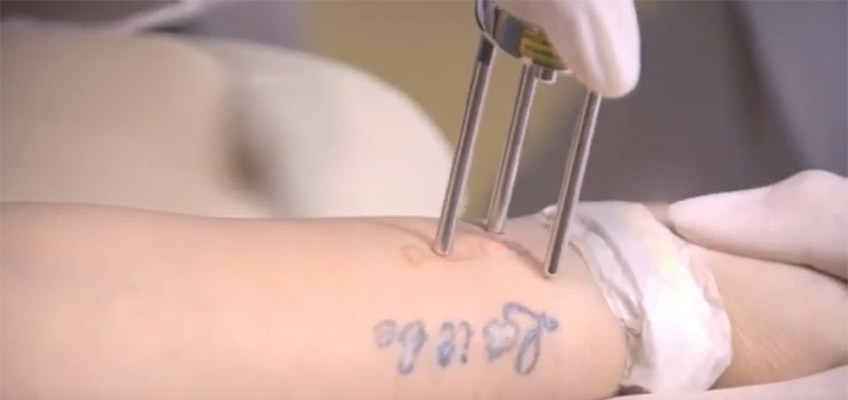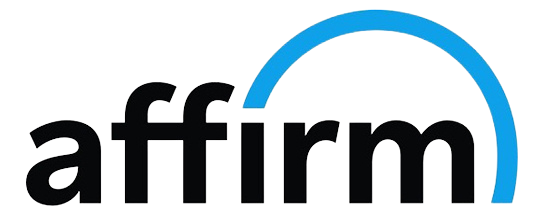
💳 Flexible Affirm Financing – Pay monthly with ease! How it works →

💳 Flexible Affirm Financing – Pay monthly with ease! How it works →
Say goodbye to unwanted tattoos with the advanced technology of the Cutera Enlighten III. This state-of-the-art laser combines precision and power to effectively remove tattoos of all colors and sizes, ensuring faster results with minimal discomfort. Embrace a new chapter with clear, smooth skin.
Schedule Your Free Consultation Today
Enlighten III Laser Tattoo Removal
Variable (Consultation Required)
Minimal Downtime (Consultation Required)
| Tattoo Size | One Session | Three Sessions |
|---|---|---|
| 1” x 1” | $200 | $500 |
| 2” x 2” | $300 | $800 |
| 3” x 3” | $450 | $1200 |
| 4” x 4” | $550 | $1500 |
| 5” x 5” | $650 | $1800 |
| 6” x 6” | $700 | $2000 |
| Eyebrow Tattoo Removal | from $300 | - |
| Scalp Tattoo Removal | from $600 | - |
| Feature | ENLIGHTEN III Laser | Other Laser Devices | ENLIGHTEN III Advantages |
|---|---|---|---|
| Treatment Sessions | 3-6 sessions (full removal) | 10+ sessions (often incomplete) | Fewer sessions due to larger spot size and higher energy. |
| Skin Types | All skin types | Limited, often excludes darker skin | Treats all skin types, including blue, green, and violet ink on darker skin, with the 670 nm wavelength. |
| Spot Size | 8 mm (quicker treatment) | Smaller (longer treatment, shallower penetration) | Combines high energy and large spot size for effective and fast treatments. |
| Ink Colors | All ink colors | Difficulty removing red, yellow, blue, and green | Removes all colors with multiple wavelengths, including the 670 nm for challenging colors. |
| Ink Removal Process | Nanosecond and picosecond pulses break down all ink particle sizes. | Picosecond pulse only chips away at ink. | Effectively treats ink at all depths with large spot sizes, long wavelengths, and a broad pulse energy range. |
*Information sourced from Cutera Inc.
Laser tattoo removal with the Cutera Enlighten III laser is an advanced, powerful, and efficient method for removing unwanted ink.
The Cutera Enlighten III laser offers several advantages over traditional tattoo removal technologies:
The Cutera Enlighten III laser is popular for removing multi-colored tattoos and treating darker skin tones. Its adjustable settings allow for precise treatment, targeting different ink colors effectively while minimizing skin damage.
This versatility makes it a safer, faster, and more efficient option for tattoo removal, reducing session times and improving patient comfort.
Beyond tattoo removal, the Cutera Enlighten III laser effectively treats various skin concerns, including:
The number of laser treatments needed varies based on several factors:
For Tattoo Removal:
For Skin Rejuvenation: Typically, 2–4 sessions are recommended, depending on the condition being treated and individual skin type.
Before starting your laser treatment, a numbing cream is applied to the treatment area. The procedure involves passing a handpiece over the tattoo or skin concern, delivering laser pulses to break down the pigment.
Most patients describe the sensation as similar to a rubber band snapping against the skin. After treatment, the area is covered with Vaseline to support the healing process.
After a Cutera Enlighten III laser session, you may experience mild redness and occasional blistering as the skin heals.
We recommend applying Polysporin® to aid the healing process. While you can return to daily activities immediately, avoid sun exposure, swimming, and activities that may irritate the skin until fully healed.
Common side effects of laser tattoo removal with the Cutera Enlighten III include:
Complete recovery usually takes 1–2 weeks, depending on the size and location of the treated area.

Enjoy 0% financing for Cutera Enlighten 3 Laser Tattoo Removal and say goodbye to unwanted tattoos with flexible payment options.
Affirm makes it easy to break up the cost while you receive advanced laser treatments to effectively remove your tattoos.
Pre-qualify now! Text LMC a screenshot to book your consultation.
Minimum Purchase: $1500 required for Affirm financing.
Check EligibilityOnce approved, text LMC a screenshot to schedule your Cutera Enlighten 3 Tattoo Removal consultation.
Discuss your goals, assess your skin, and measure your tattoo.
Finalize a custom treatment plan and choose a payment plan that suits your budget.
Start treatment on the very same day! (if available)
Cutera Enlighten 3 is an advanced laser tattoo removal system designed to effectively eliminate unwanted tattoos of all colors and types. Here’s why it stands out:

Looking for effective and affordable tattoo removal? LMC - Laser Medical Clinic offers flexible options to suit your needs:

Tattoos may be permanent, but there are times when removing one is the right choice. Whether you're experiencing an allergic reaction to tattoo ink, unhappy with the quality or appearance of your tattoo, noticing fading over time, or simply no longer want it, laser tattoo removal is a safe and effective solution.
If you're thinking about removing your tattoo, it's important to understand what the process involves. At LMC - Laser Medical Clinic, we use advanced laser technology to target unwanted ink, breaking it down safely so your body can naturally eliminate it.
Here’s what to expect before, during, and after a laser tattoo removal session at LMC.
The first step in your tattoo removal journey is a consultation with our experienced laser specialists. During this session, we assess your tattoo's size, ink colors, depth, and placement to develop a personalized treatment plan.
Key factors affecting treatment:
Laser tattoo removal is a commitment, requiring multiple sessions for optimal results. Our specialists will provide realistic expectations and a customized approach to suit your needs.
Each session involves our laser specialist using precise pulses of Cutera Enlighten III laser technology to target the ink particles in your tattoo.
What to expect during the procedure:
Some redness and swelling may occur, but these effects subside quickly. Our team prioritizes your comfort and will provide cooling measures and numbing options if needed.
After each session, following proper post-care instructions is essential for a smooth healing process.
Post-treatment care guidelines:
The treated area will gradually heal, and over time, your tattoo will continue to fade as your body processes the ink particles. With each session, your tattoo becomes less visible until the desired results are achieved.